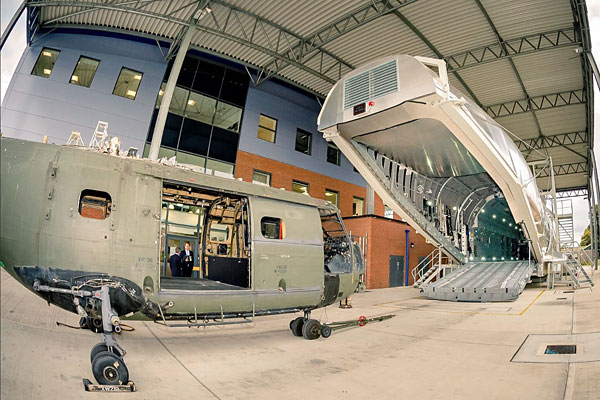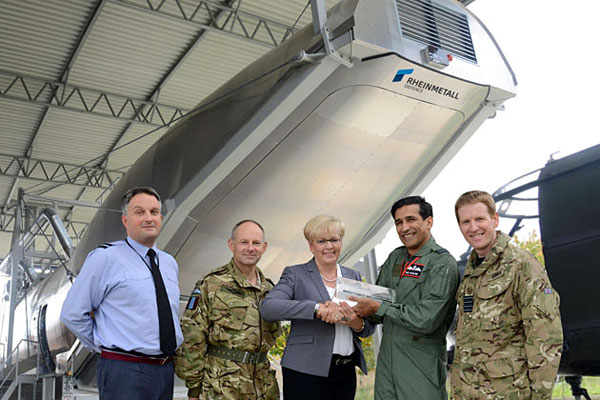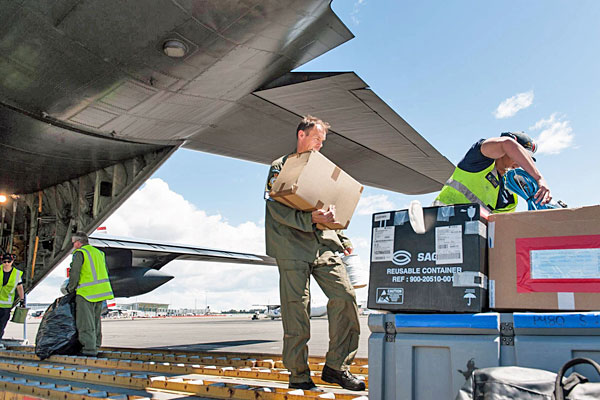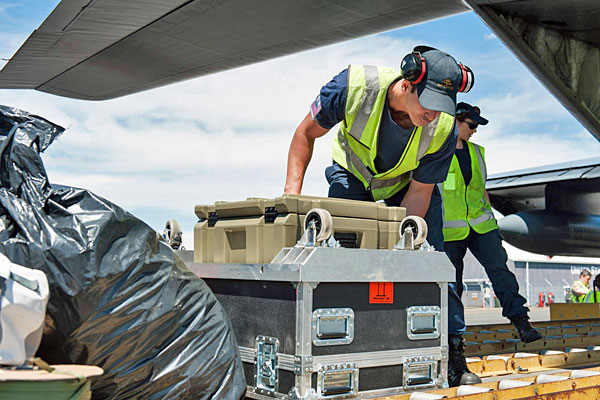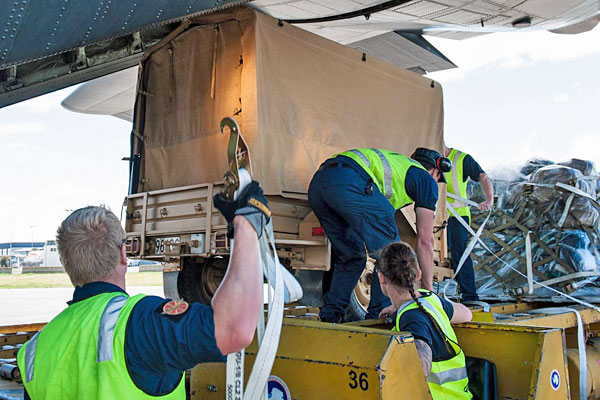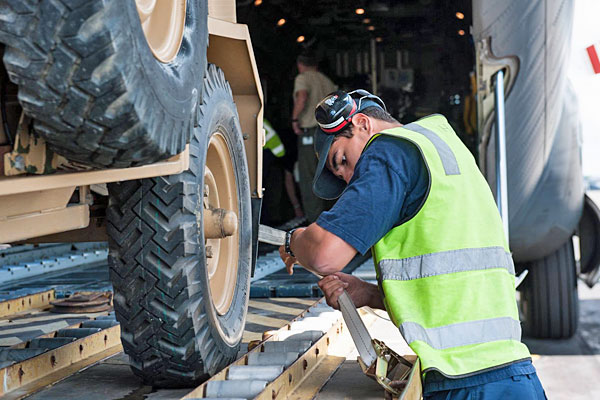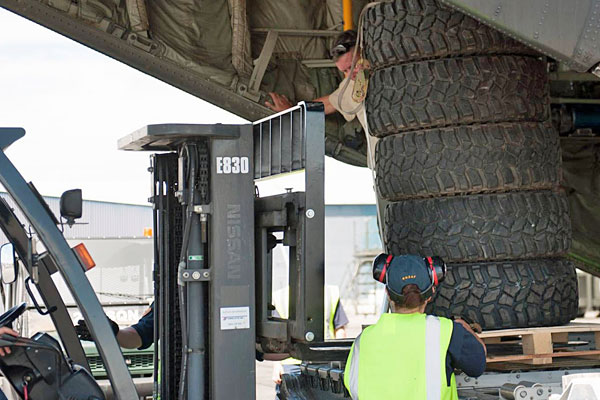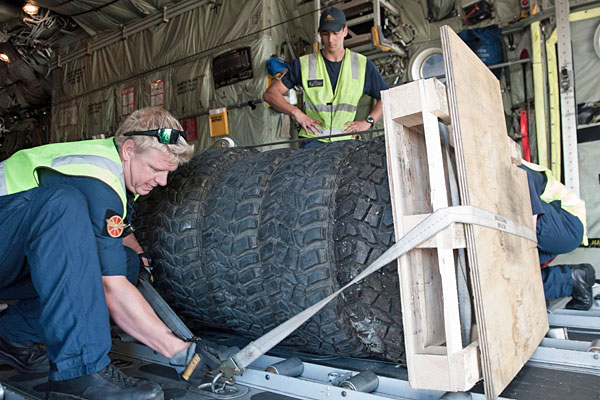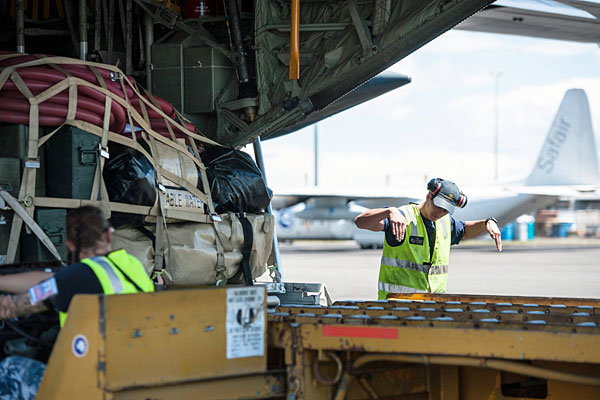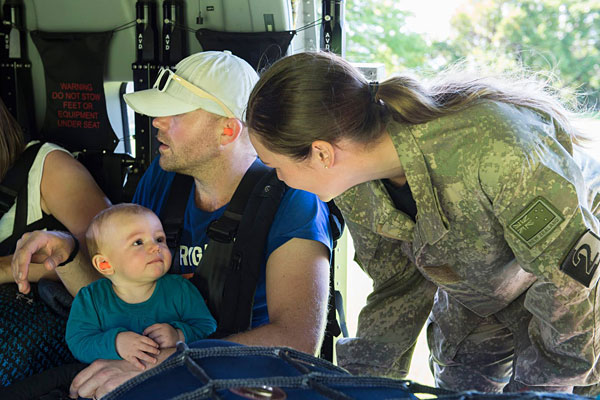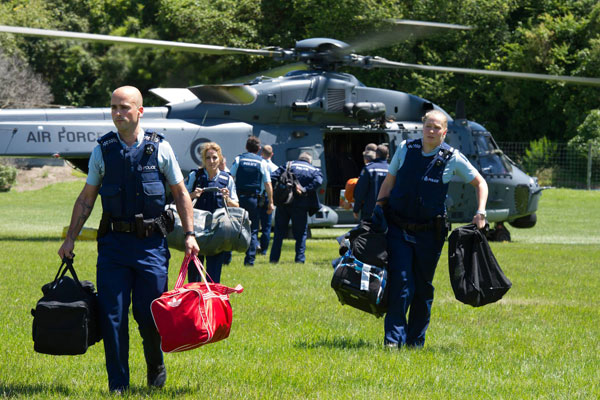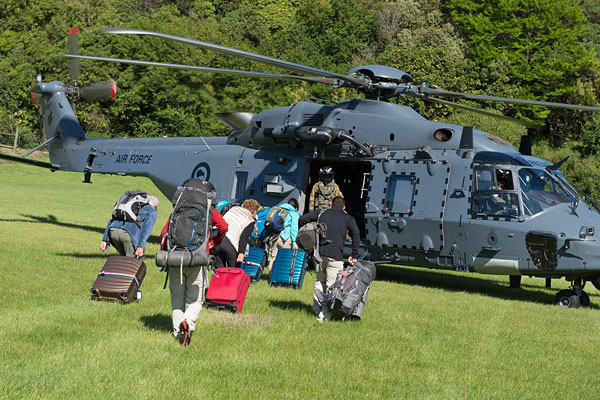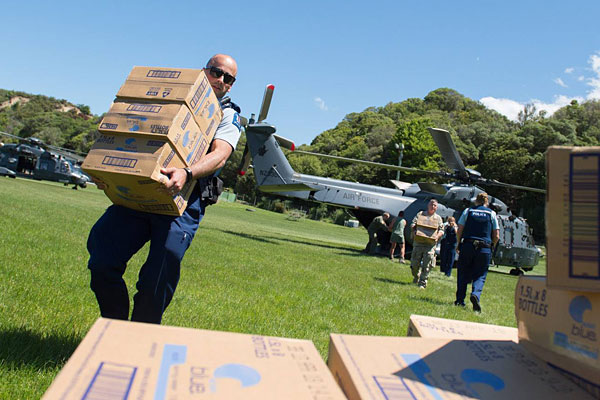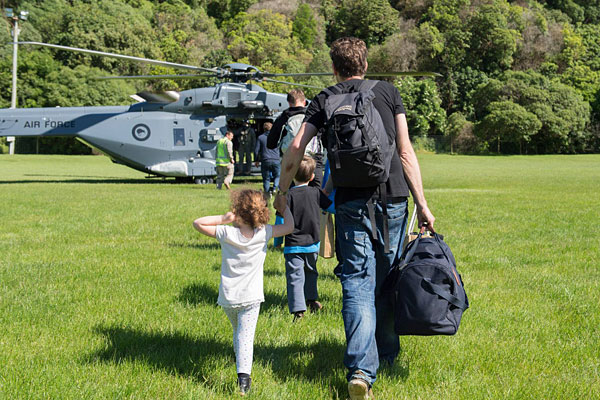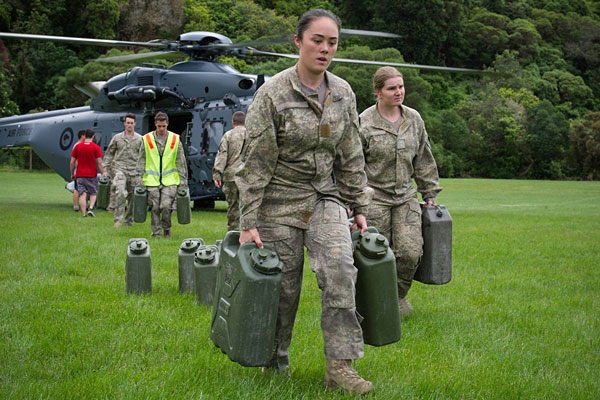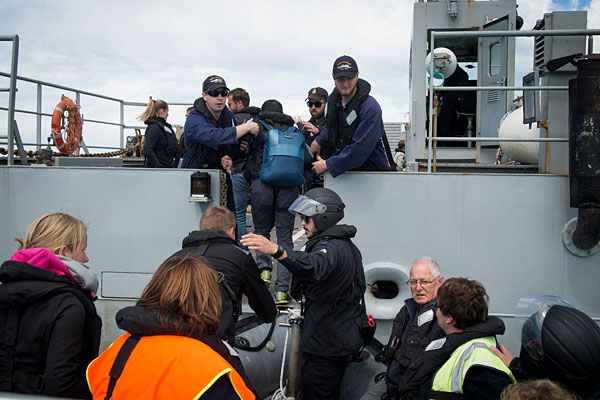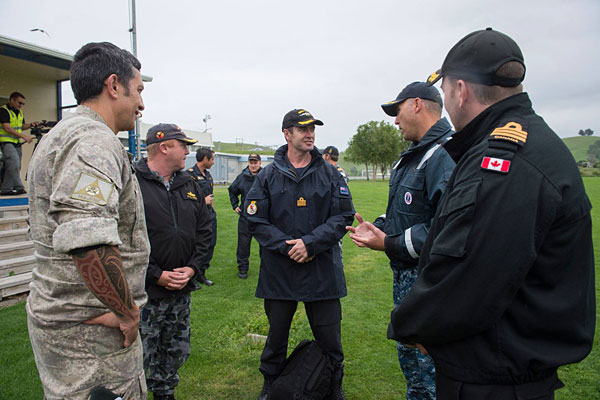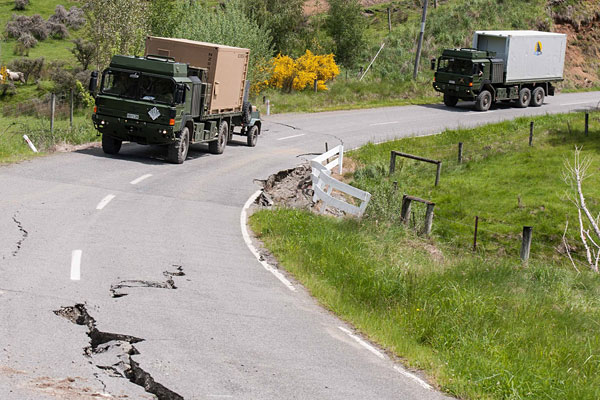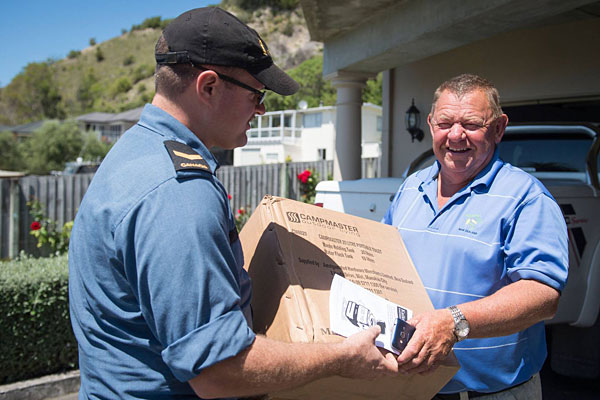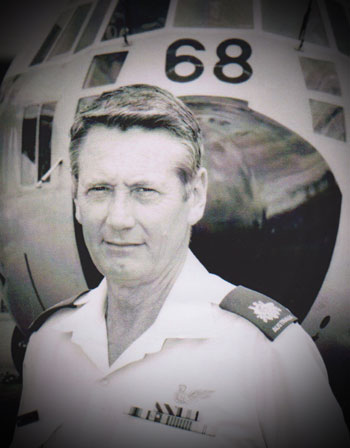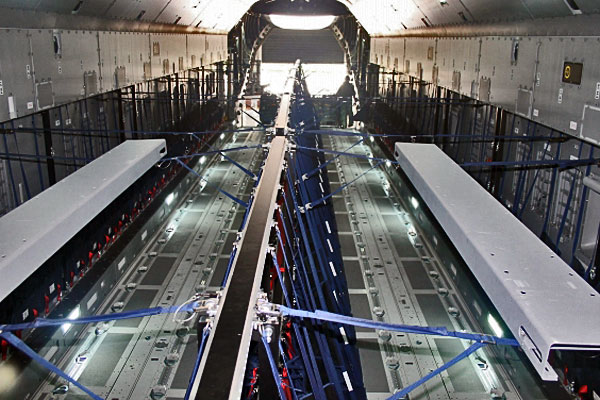


Rheinmetall and Airbus Defence & Space have supplied the Cargo Hold Trainer Enhanced (CHT-E) for the A400M transport plane to the Royal Air Force on October 20 at a formal handover ceremony. This training system is located in the National Training Centre at the Royal Air Force station in Brize Norton, the company announced today.
Doris Lilkendey, head of the flight simulation product unit of Rheinmetall Defence Electronics, presented the station commander, Group Captain Timothy T. Jones, and the commander of No. 24 Squadron, Wing Commander Daz Rawlins, with a lasered, illuminated model of the cargo hold simulator for the A400M.
The CHT-E is designed to provide realistic training for cargo hold and ground personnel without needing to use the original equipment. Initial and advanced training as well as refresher courses and preparation for specific operations can be carried out on the system.
Training options include mission-specific reconfiguration of the cargo hold, preparation for loading, loading and unloading, airdrop procedures, standard operating procedures while in flight and on the ground, and cooperation between multiple crews.
Doris Lilkendey, head of the flight simulation product unit of Rheinmetall Defence Electronics, presented the station commander, Group Captain Timothy T. Jones, and the commander of No. 24 Squadron, Wing Commander Daz Rawlins, with a lasered, illuminated model of the cargo hold simulator for the A400M.
The CHT-E is designed to provide realistic training for cargo hold and ground personnel without needing to use the original equipment. Initial and advanced training as well as refresher courses and preparation for specific operations can be carried out on the system.
Training options include mission-specific reconfiguration of the cargo hold, preparation for loading, loading and unloading, airdrop procedures, standard operating procedures while in flight and on the ground, and cooperation between multiple crews.
The system, supplied by Rheinmetall under contract with Airbus D&S, is an exact replica of the A400M cargo hold, encompassing all of the operator interfaces, control stations and technical features of the original equipment. The package includes an instructor control station, where exercises can be prepared, monitored and evaluated.
The first CHT-E has been in operation at the Airbus International Training Centre in Seville, Spain, since September 2013; and the German Air Force received its CHT-E in July 2015.
Doris Lilkendey, head of the flight simulation product unit of Rheinmetall Defence Electronics, said: ‘With the CHT-E, we are contributing to the operational safety of future A400M crews. We are proud of this. We would like to thank everyone involved in the project for the magnificent cooperation, which resulted in its swift, smooth implementation. This is what made today’s milestone possible.’
The first CHT-E has been in operation at the Airbus International Training Centre in Seville, Spain, since September 2013; and the German Air Force received its CHT-E in July 2015.
Doris Lilkendey, head of the flight simulation product unit of Rheinmetall Defence Electronics, said: ‘With the CHT-E, we are contributing to the operational safety of future A400M crews. We are proud of this. We would like to thank everyone involved in the project for the magnificent cooperation, which resulted in its swift, smooth implementation. This is what made today’s milestone possible.’
RAF Receives Cargo Trainer for Airbus A400M
RAF Receives Cargo Trainer for Airbus A400M
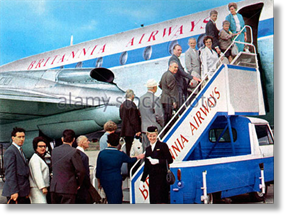
From: David King, Bury St Edmunds, Suffolk
Subject: Memories of St. Pancras
In David Powell's ‘Swan Song’ re Daily Mail Air Race he mentioned the coal yard near St Pancras station. Britannia Airways had the trooping contract to Germany and had a booking-in area underneath this coal yard.
JSATC Hendon had a detachment here processing service pax then bussing them up to Luton. I had a year on this detachment doing the admin, dealing with inqueries etc., and having to rush to meet diverted aircraft when required; Gatwick was a favourite as Luton was fog-bound quite often.
Subject: Memories of St. Pancras
In David Powell's ‘Swan Song’ re Daily Mail Air Race he mentioned the coal yard near St Pancras station. Britannia Airways had the trooping contract to Germany and had a booking-in area underneath this coal yard.
JSATC Hendon had a detachment here processing service pax then bussing them up to Luton. I had a year on this detachment doing the admin, dealing with inqueries etc., and having to rush to meet diverted aircraft when required; Gatwick was a favourite as Luton was fog-bound quite often.
I could talk for hours about that detachment (talk about service pax packing their brains in their suitcases!).
David King
David King
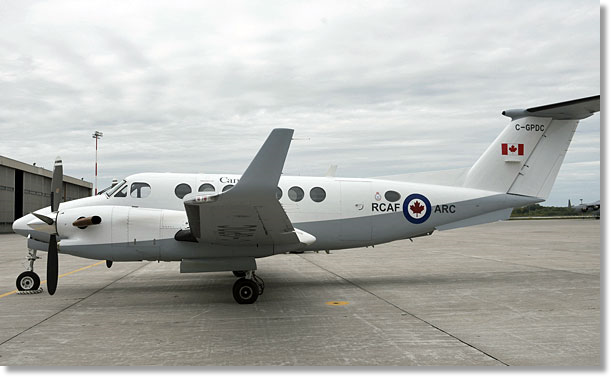
In the coming months, you might notice that Royal Canadian Air Force aircraft look a little different.
In 2011, to recognize Canada’s military heritage, the historic names of Canada’s three military services were restored: the Royal Canadian Navy (RCN), the Canadian Army (CA) and the Royal Canadian Air Force (RCAF). Under these designations, Canadians emerged victorious from the Second World War and later defended Canadian interests throughout the Cold War and the Korean War.
The RCAF received its new insignia in 2013, followed by changes to members’ uniforms and the redesignation of the rank Private as “Aviator”. Now, the next step in the restoration process is to bring RCAF aircraft livery - that is, aircraft paint scheme - in line with the earlier changes.
The new aircraft livery includes the bilingual designation “RCAF” and “ARC” (for Aviation Royale Canadienne) on either side of an updated roundel.
In 2011, to recognize Canada’s military heritage, the historic names of Canada’s three military services were restored: the Royal Canadian Navy (RCN), the Canadian Army (CA) and the Royal Canadian Air Force (RCAF). Under these designations, Canadians emerged victorious from the Second World War and later defended Canadian interests throughout the Cold War and the Korean War.
The RCAF received its new insignia in 2013, followed by changes to members’ uniforms and the redesignation of the rank Private as “Aviator”. Now, the next step in the restoration process is to bring RCAF aircraft livery - that is, aircraft paint scheme - in line with the earlier changes.
The new aircraft livery includes the bilingual designation “RCAF” and “ARC” (for Aviation Royale Canadienne) on either side of an updated roundel.
The changes will be made in a way that minimizes any additional cost and does not take an operational aircraft out of service unnecessarily. The changes are expected to take four to five years.
Aircraft will receive their new livery when they are already undergoing scheduled routine maintenance, which includes any necessary repainting. This is done every few years to correct the effects of usage and exposure to the elements. As of the first of November, one aircraft - the King Air B200, located at 8 Wing Trenton, Ontario - has been painted in the new livery.
Royal Canadian Air Force Public Affairs
Aircraft will receive their new livery when they are already undergoing scheduled routine maintenance, which includes any necessary repainting. This is done every few years to correct the effects of usage and exposure to the elements. As of the first of November, one aircraft - the King Air B200, located at 8 Wing Trenton, Ontario - has been painted in the new livery.
Royal Canadian Air Force Public Affairs
A “new look” for RCAF aircraft
A “new look” for RCAF aircraft
From: Malcolm Symonds, Cardiff
Subject: Remembering Them
Hi Tony,
Before I start, I would like to add my name to all those who regularly praise the excellent content of your site and, having edited magazines and web sites myself, I know how much effort it takes to produce. Thank you.
As a very junior officer, there were many in the Air Force who had a positive effect upon me and my development. A few have left a lasting impact upon me.
Subject: Remembering Them
Hi Tony,
Before I start, I would like to add my name to all those who regularly praise the excellent content of your site and, having edited magazines and web sites myself, I know how much effort it takes to produce. Thank you.
As a very junior officer, there were many in the Air Force who had a positive effect upon me and my development. A few have left a lasting impact upon me.
As a very junior officer, there were many in the Air Force who had a positive effect upon me and my development. A few have left a lasting impact upon me.
The first was WO, later Flt Lt Bob Satterley. I knew him first as my instructor both in trade skills and as a guide and mentor to an inexperienced officer. Later, I was able to class Bob as a friend. I have heard so many stories from across the trade and the years, about the Satterley training ethic and some seem beyond belief, but in my experience most were true. I can think of several former students of his, including myself, who have found to their cost, the implications of being late for work, or consistently making the same errors on Trims or Manifests and failure to follow the details of a Satterley briefing. Of course, despite his unorthodox methods, his heart was always in the right place.
The first was WO, later Flt Lt Bob Satterley. I knew him first as my instructor both in trade skills and as a guide and mentor to an inexperienced officer. Later, I was able to class Bob as a friend. I have heard so many stories from across the trade and the years, about the Satterley training ethic and some seem beyond belief, but in my experience most were true. I can think of several former students of his, including myself, who have found to their cost, the implications of being late for work, or consistently making the same errors on Trims or Manifests and failure to follow the details of a Satterley briefing. Of course, despite his unorthodox methods, his heart was always in the right place.
The ships were by then suffering from a number of maintenance issues that resulted in de-salinization and air conditioning plants failing. The voyage up from the Falklands often became for many of the troops an extremely unpleasant journey. The disgruntled troops, who had survived a winter war and an unpleasant sea voyage, arrived at a tropical island, only to find that they would not be allowed ashore until their air transport arrived.
I found myself climbing the ship's ladder and attempting to maintain effective officerly demeanour, while being pelted by beer cans and abuse. The relief for me came when I was met at the rail by a hearty, smiling, Dave Wall who seemed to be able to exercise amazing control on his charges, who melted away at his arrival. Dave always had everything ready for me, including useful tips to help this inexperienced officer achieve his task. Dave was a superb guide and mentor, who always seemed to know when help was needed and gave it without diminishing my fledgling authority.
Malcolm Symonds
I found myself climbing the ship's ladder and attempting to maintain effective officerly demeanour, while being pelted by beer cans and abuse. The relief for me came when I was met at the rail by a hearty, smiling, Dave Wall who seemed to be able to exercise amazing control on his charges, who melted away at his arrival. Dave always had everything ready for me, including useful tips to help this inexperienced officer achieve his task. Dave was a superb guide and mentor, who always seemed to know when help was needed and gave it without diminishing my fledgling authority.
Malcolm Symonds

From: David King, Bury St Edmunds, Suffolk
Subject: Memories of St. Pancras
In David Powell's ‘Swan Song’ re Daily Mail Air Race he mentioned the coal yard near St Pancras station. Britannia Airways had the trooping contract to Germany and had a booking-in area underneath this coal yard.
JSATC Hendon had a detachment here processing service pax then bussing them up to Luton. I had a year on this detachment doing the admin, dealing with inqueries etc., and having to rush to meet diverted aircraft when required; Gatwick was a favourite as Luton was fog-bound quite often.
I could talk for hours about that detachment (talk about service pax packing their brains in their suitcases!).
David King
Subject: Memories of St. Pancras
In David Powell's ‘Swan Song’ re Daily Mail Air Race he mentioned the coal yard near St Pancras station. Britannia Airways had the trooping contract to Germany and had a booking-in area underneath this coal yard.
JSATC Hendon had a detachment here processing service pax then bussing them up to Luton. I had a year on this detachment doing the admin, dealing with inqueries etc., and having to rush to meet diverted aircraft when required; Gatwick was a favourite as Luton was fog-bound quite often.
I could talk for hours about that detachment (talk about service pax packing their brains in their suitcases!).
David King
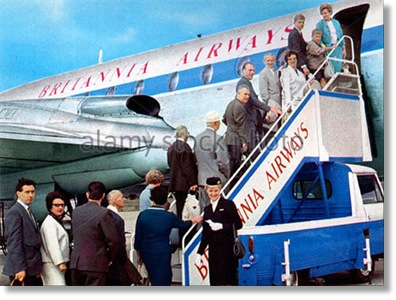
From: Brian Lay, Wellington
Subject: Kaikoura Earthquake
Good Morning Tony,
Subject: Kaikoura Earthquake
Good Morning Tony,
Following the 7.8 magnitude earthquake in the early hours of 14 November, the epicentre being close to Kaikoura on New Zealand's South Island - In the last seven days NZDF has deployed 11 aircraft, four ships and a convoy of 27 Army vehicles.
Nearly 1,000 people have been evacuated on NH90 helicopters and on HMNZS Canterbury (with 9.3 tonnes of baggage, one cat, 17 dogs and about 30,000 bees). We have delivered more than 300 tonnes of aid supplies to affected communities by air, land and sea.
Our Navy and Air Force have worked in partnership with visiting vessels and personnel from Australia, Japan, the United States and Canada to assess the damage and deliver aid.
My role in the NCMC (National Crisis Management Centre) located in the “Bunker” under the Parliament Buildings in Wellington, is as a part of the NZDF Liaison Team working with other Government agencies to facilitate and organise transportation of essential freight to the effected areas of Kaikoura.
Nearly 1,000 people have been evacuated on NH90 helicopters and on HMNZS Canterbury (with 9.3 tonnes of baggage, one cat, 17 dogs and about 30,000 bees). We have delivered more than 300 tonnes of aid supplies to affected communities by air, land and sea.
Our Navy and Air Force have worked in partnership with visiting vessels and personnel from Australia, Japan, the United States and Canada to assess the damage and deliver aid.
My role in the NCMC (National Crisis Management Centre) located in the “Bunker” under the Parliament Buildings in Wellington, is as a part of the NZDF Liaison Team working with other Government agencies to facilitate and organise transportation of essential freight to the effected areas of Kaikoura.
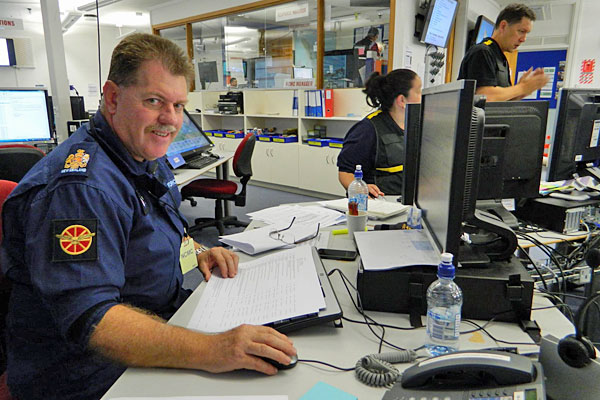
As a matter of interest, my new boss is none other than Wing Commander Pete King, formerly Juliet and Foxtrot Teams, UKMAMS and OC of 4624 Movements Squadron RAuxAF.
Minister of Defence Gerry Brownlee had this to say: "In times of crisis, the NZ Defence Force is always ready to help. We can all be proud of their actions in response."
Brian Lay
[To see lots more photographs, visit the Kaikoura Earthquake Facebook Page]
Minister of Defence Gerry Brownlee had this to say: "In times of crisis, the NZ Defence Force is always ready to help. We can all be proud of their actions in response."
Brian Lay
[To see lots more photographs, visit the Kaikoura Earthquake Facebook Page]
New members who have joined us recently:
Mark Gibbons, Ipswich, Suffolk
Bob Adam, Poole, Dorset
Welcome to the OBA!
In the same vein, WO Derek Pilkington also had a positive effect upon my development. Whilst his methods were more orthodox, his results were every bit as good and in both a training and working environment, Derek managed to pass on his huge depth of knowledge and experience, with humour.
The last but by no means least of those who influenced my formative trade years, was WO Dave Wall. During the recovery phase of the Falklands War, Dave was involved in the planning and execution of the movement of troops from the Falklands, using Royal Fleet Auxiliary and seconded civilian ships and delivering them, including their baggage, to Ascension Island, for transfer to what was then still a fleet of BA Tristars. The Vertrep at Ascension became a regular Mobile Task for me and riding out to the ships on the Senior Naval Officer's (SNO's) boat, to calculate the lift, was both exciting and challenging.
The last but by no means least of those who influenced my formative trade years, was WO Dave Wall. During the recovery phase of the Falklands War, Dave was involved in the planning and execution of the movement of troops from the Falklands, using Royal Fleet Auxiliary and seconded civilian ships and delivering them, including their baggage, to Ascension Island, for transfer to what was then still a fleet of BA Tristars. The Vertrep at Ascension became a regular Mobile Task for me and riding out to the ships on the Senior Naval Officer's (SNO's) boat, to calculate the lift, was both exciting and challenging.
Leonardo C-27J Spartan lands in Ottawa ahead of possible FWSAR announcement
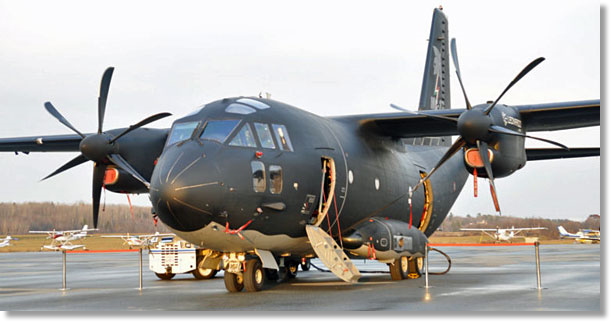
One of the bidders for the Royal Canadian Air Force’s fixed-wing search and rescue (FWSAR) replacement aircraft could receive an early Christmas present. Judy Foote, Minister of Public Services and Procurement, told the Canadian Aerospace Summit on Wednesday that the government is “in the process of evaluating the bids and will be awarding the contract soon.”
“We think ‘soon’ means sometime between now and Christmas,” said retired LGen Steve Lucas, a spokesperson for Team Spartan, which is bidding the C-27J Spartan.
The FWSAR project became an early test case poster child for the previous Conservative government’s 2014 defence procurement strategy, which, among other tools, introduced the value proposition to prospective bids as way to engage more Canadian companies and improve the government’s economic return.
“We think ‘soon’ means sometime between now and Christmas,” said retired LGen Steve Lucas, a spokesperson for Team Spartan, which is bidding the C-27J Spartan.
The FWSAR project became an early test case poster child for the previous Conservative government’s 2014 defence procurement strategy, which, among other tools, introduced the value proposition to prospective bids as way to engage more Canadian companies and improve the government’s economic return.
When the request for proposals (RFP) was issued in March 2015, the 200-page document put the onus on industry to propose how many aircraft and bases would be required to cover Canada’s immense area of responsibility (AOR), which extends from the Pacific Ocean to the North Pole and well out into the eastern Atlantic.
“We asked industry to provide an end-to-end solution,” said Foote. “This will mean a modern, reliable and effective fleet, equipped with advanced technology systems, significantly improved radar and sensors, navigation and data management systems.”
The Spartan team, which includes Italian aircraft manufacturer Leonardo, General Dynamics Mission Systems-Canada (GDMS-C), DRS Technologies, KF Aerospace, and IMP Aerospace, took advantage of the conference to steer its demonstration C-27J through Ottawa as it embarks on a tour of potential and current customers in Latin America that includes stops in Panama, Peru and Argentina, including Argentina’s Antarctic base, Marambio.
The C-27J is one of three aircraft currently being considered, along with Airbus’ C295 and Embraer’s KC-390. To meet the in-service support (ISS) requirements, Leonardo and GDMS-C in February formed a joint venture called Spartan Aviation Services to serve as the ISS integrator if their bid is successful.
While the RFP asked bidders to identify solutions to operate from either three or four bases across Canada, Lucas said Team Spartan would prefer to operate from the current four bases in Greenwood, N.S., Trenton, Ont., Winnipeg, Man., and Comox, B.C. “That would make the most sense,” he said, though he would not reveal how many aircraft would be required to service the RCAF’s three search regions.
However, the evaluation process included a computer model response of each bidder’s aircraft to over 7,000 SAR incidents to which the RCAF has responded in the past five years. The model then measured not only how long it would have taken each aircraft to reach the search area, but also its time on station and recovery time.
If Christmas does come early for one of the FWSAR contenders, the first aircraft will be delivered to the RCAF within 36 months of contract award, with the rest to follow over the next three years.
skiesmag.com
“We asked industry to provide an end-to-end solution,” said Foote. “This will mean a modern, reliable and effective fleet, equipped with advanced technology systems, significantly improved radar and sensors, navigation and data management systems.”
The Spartan team, which includes Italian aircraft manufacturer Leonardo, General Dynamics Mission Systems-Canada (GDMS-C), DRS Technologies, KF Aerospace, and IMP Aerospace, took advantage of the conference to steer its demonstration C-27J through Ottawa as it embarks on a tour of potential and current customers in Latin America that includes stops in Panama, Peru and Argentina, including Argentina’s Antarctic base, Marambio.
The C-27J is one of three aircraft currently being considered, along with Airbus’ C295 and Embraer’s KC-390. To meet the in-service support (ISS) requirements, Leonardo and GDMS-C in February formed a joint venture called Spartan Aviation Services to serve as the ISS integrator if their bid is successful.
While the RFP asked bidders to identify solutions to operate from either three or four bases across Canada, Lucas said Team Spartan would prefer to operate from the current four bases in Greenwood, N.S., Trenton, Ont., Winnipeg, Man., and Comox, B.C. “That would make the most sense,” he said, though he would not reveal how many aircraft would be required to service the RCAF’s three search regions.
However, the evaluation process included a computer model response of each bidder’s aircraft to over 7,000 SAR incidents to which the RCAF has responded in the past five years. The model then measured not only how long it would have taken each aircraft to reach the search area, but also its time on station and recovery time.
If Christmas does come early for one of the FWSAR contenders, the first aircraft will be delivered to the RCAF within 36 months of contract award, with the rest to follow over the next three years.
skiesmag.com
Leonardo C-27J Spartan lands in Ottawa
ahead of possible FWSAR announcement
ahead of possible FWSAR announcement
From: Mike Lefebvre, Burton, NB
Subject: Remembering Them
Hi Tony
I don't know if you ever heard about Willie Verch. He was one of the sergeants on line crew at 2 AMU Trenton in the mid 60's. I never knew how to take him, even while celebrating a successful day's work he always had such a severe look on his face.
Three of our sergeants were CFR'd (commissioned from the ranks) and he was one of them.
Twenty some years later I worked for him again, this time he was a Major, the BTNO in Winnipeg Manitoba. He hadn't changed one bit, still that stern look, the same determined man of years ago.
No doubt he was the man who left his mark in the careers of many Trans Techs/Traffic Techs for decades.
Respectfully
Mike Lefebvre
Subject: Remembering Them
Hi Tony
I don't know if you ever heard about Willie Verch. He was one of the sergeants on line crew at 2 AMU Trenton in the mid 60's. I never knew how to take him, even while celebrating a successful day's work he always had such a severe look on his face.
Three of our sergeants were CFR'd (commissioned from the ranks) and he was one of them.
Twenty some years later I worked for him again, this time he was a Major, the BTNO in Winnipeg Manitoba. He hadn't changed one bit, still that stern look, the same determined man of years ago.
No doubt he was the man who left his mark in the careers of many Trans Techs/Traffic Techs for decades.
Respectfully
Mike Lefebvre
Take a flight to the past on this historic aircraft at Sharjah
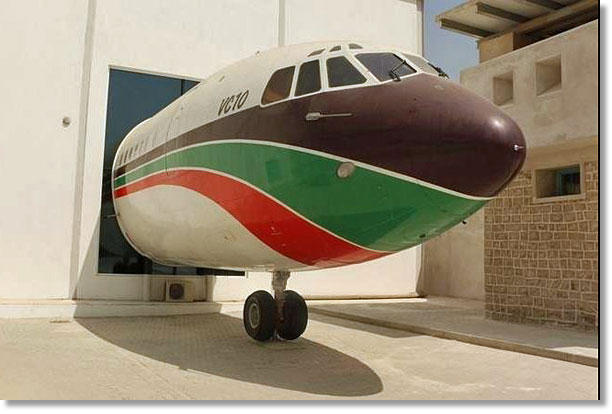
A rare passenger aircraft synonymous with early jet air travel in the UAE made its final journey when it arrived in Sharjah this month.
The front section of a Vickers VC10, fondly nicknamed 'The Queen of the Skies', recently arrived from the UK by ship before being driven from Khor Fakkan to Sharjah Al Mahatta Aviation Museum. It is being added to the permanent exhibits for the UAE community to gain unique access to the cockpit, cabin and cargo hold of a plane that regularly touched down throughout the Gulf in the 1960s and 70s.
The aircraft will be a lasting example of a great airliner known for its ability to operate in hot climates. Only 44 models of the British-made VC10 were ever built, despite it being second only to Concorde in the time taken to cross the Atlantic by a jet airliner.
Manal Ataya, director-general of Sharjah Museums Department, said: "We are honoured to bring this icon of air travel to Sharjah for people of all ages, and especially aviation enthusiasts, to enjoy. The arrival of the VC10 adds another chapter to the story of aviation in the UAE, and in particular Sharjah, where the first commercial landing took place in October 1932 at Al Mahatta Airport.
The front section of a Vickers VC10, fondly nicknamed 'The Queen of the Skies', recently arrived from the UK by ship before being driven from Khor Fakkan to Sharjah Al Mahatta Aviation Museum. It is being added to the permanent exhibits for the UAE community to gain unique access to the cockpit, cabin and cargo hold of a plane that regularly touched down throughout the Gulf in the 1960s and 70s.
The aircraft will be a lasting example of a great airliner known for its ability to operate in hot climates. Only 44 models of the British-made VC10 were ever built, despite it being second only to Concorde in the time taken to cross the Atlantic by a jet airliner.
Manal Ataya, director-general of Sharjah Museums Department, said: "We are honoured to bring this icon of air travel to Sharjah for people of all ages, and especially aviation enthusiasts, to enjoy. The arrival of the VC10 adds another chapter to the story of aviation in the UAE, and in particular Sharjah, where the first commercial landing took place in October 1932 at Al Mahatta Airport.
"Sharjah Museums Department would like to extend a special thanks to His Highness Dr Shaikh Sultan bin Mohammed Al Qasimi, Member of the Supreme Council and Ruler of Sharjah, for his foresight and generosity in ensuring that this historic aircraft was transported all the way from the UK to its permanent place at Al Mahatta Museum."
The section was built for East African Airways Corporation in 1969 and registered as 5X-UVJ. It flew on routes taking in London, Nairobi, Mombasa, Dar-es-Salaam, and Kampala. In 1979, it was sold to Britain's Royal Air Force to be converted into a flight re-fuelling tanker and for a further 28 years it operated mainly out of RAF Brize Norton in Oxfordshire. Huge fuel tanks in its cabin replaced the rows of passenger seats. In March 2013, it flew its last flight into Bruntingthorpe Airfield in Leicester to be 'struck off charge' and taken out of service.
Khaleej Times
The section was built for East African Airways Corporation in 1969 and registered as 5X-UVJ. It flew on routes taking in London, Nairobi, Mombasa, Dar-es-Salaam, and Kampala. In 1979, it was sold to Britain's Royal Air Force to be converted into a flight re-fuelling tanker and for a further 28 years it operated mainly out of RAF Brize Norton in Oxfordshire. Huge fuel tanks in its cabin replaced the rows of passenger seats. In March 2013, it flew its last flight into Bruntingthorpe Airfield in Leicester to be 'struck off charge' and taken out of service.
Khaleej Times
Take a flight to the past on this historic aircraft at Sharjah
Remembering them...
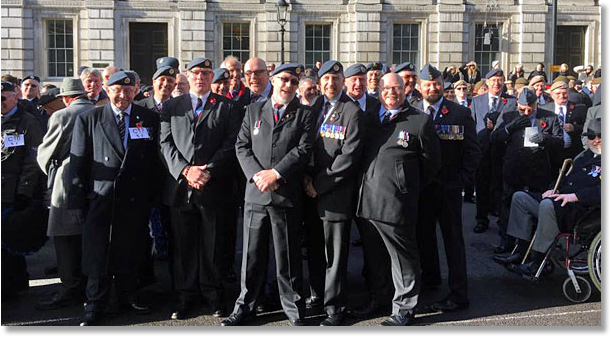
A 'Manifest of Movers' came together at Whitehall in London on 13th November 2016, Remembrance Sunday, to attend the annual parade for the purpose of laying wreaths at the Cenotaph.
For those wishing to view the whole ceremony, televised by the BBC, here's the YouTube link: 2016 UK Remembrance Sunday London BBC Complete.
Movers are featured at 1:34:10 and 1:57:20.
For those wishing to view the whole ceremony, televised by the BBC, here's the YouTube link: 2016 UK Remembrance Sunday London BBC Complete.
Movers are featured at 1:34:10 and 1:57:20.
Remembering them...
New RAAF Poseidon touches down
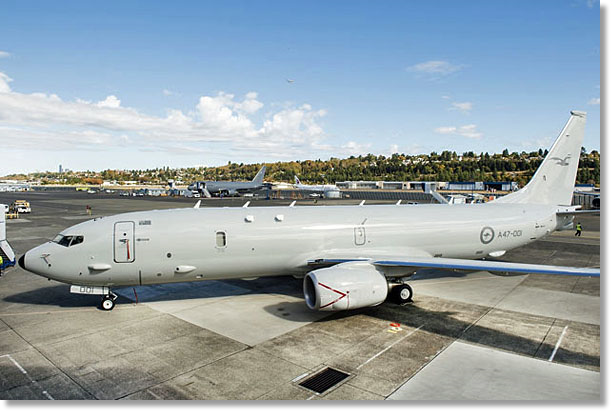
The first of 15 of the RAAF's new Poseidon aircraft was shown off in Canberra on Wednesday, 16th November. The Poseidon is a grey albatross of an aircraft designed to spot lost yachtsmen or asylum seeker boats or to detect and sink enemy submarines. Based on the widely used Boeing 737, they will replace the RAAF's 19 Orion maritime patrol aircraft in a project worth more than $5 billion.
The Poseidons, which will be based at RAAF Edinburgh, will eventually operate in conjunction with Triton unmanned surveillance aircraft, keeping watch over Australia's 14 million square kilometres of ocean surrounds.
RAAF Orions, based on the 1960's Lockheed Electra airliner, have served Australia well. With upgrades to radar and surveillance equipment, they are probably the most capable aircraft of all the Orions operated by more than a dozen nations. But they're getting old, with the first delivered in 1984.
The US, which operates a larger fleet of even older Orions, was also looking for a replacement. In 2007, Australia joined the US Navy program to develop Poseidon.
Herald Sun
The Poseidons, which will be based at RAAF Edinburgh, will eventually operate in conjunction with Triton unmanned surveillance aircraft, keeping watch over Australia's 14 million square kilometres of ocean surrounds.
RAAF Orions, based on the 1960's Lockheed Electra airliner, have served Australia well. With upgrades to radar and surveillance equipment, they are probably the most capable aircraft of all the Orions operated by more than a dozen nations. But they're getting old, with the first delivered in 1984.
The US, which operates a larger fleet of even older Orions, was also looking for a replacement. In 2007, Australia joined the US Navy program to develop Poseidon.
Herald Sun
New RAAF Poseidon touches down
From: John Wickham, Dubai
Subject: Remembering Them
Tony,
Do you or any movers have a good address for Ian Wilkinson? Please e-mail me.
Cheers,
John
Subject: Remembering Them
Tony,
Do you or any movers have a good address for Ian Wilkinson? Please e-mail me.
Cheers,
John
Embraer Responds to New Zealand RFI for Airlift, Surveillance Aircraft
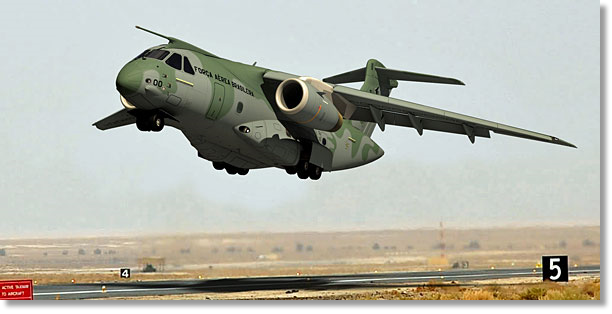
Embraer has responded to a recent New Zealand request for information (RFI) for a Future Air Mobility Capability (FAMC), with an offer for five KC-390 multimission transport aircraft.
The KC-390 is under development against a contract for 28 aircraft to replace the Brazilian Air Force’s fleet of Lockheed C-130H Hercules, with first deliveries beginning in 2018. The Brazilian aircraft manufacturer said it also holds letters of intent, for a further 32 aircraft, from five different countries and is actively marketing the aircraft to potential customers in Europe, the Middle East and Latin America.
The New Zealand proposal marks the company’s first opportunity for the KC-390 in the Asia-Pacific region, and the bid is supported by Boeing defense products division under the terms of a teaming agreement announced at the Farnborough International Airshow.
The KC-390 is under development against a contract for 28 aircraft to replace the Brazilian Air Force’s fleet of Lockheed C-130H Hercules, with first deliveries beginning in 2018. The Brazilian aircraft manufacturer said it also holds letters of intent, for a further 32 aircraft, from five different countries and is actively marketing the aircraft to potential customers in Europe, the Middle East and Latin America.
The New Zealand proposal marks the company’s first opportunity for the KC-390 in the Asia-Pacific region, and the bid is supported by Boeing defense products division under the terms of a teaming agreement announced at the Farnborough International Airshow.
The Royal New Zealand Air Force’s FAMC program seeks to acquire a fixed-wing transport capability to replace the country’s five C-130Hs and two Boeing 757s, either with two new aircraft or a single type able to meet essential requirements in both strategic and tactical airlift roles.
Delivery of the first aircraft is required by February 2020 and for initial operational capability (IOC) to follow in February 2021. Final operational capability (FOC) is required no later than February 2024. The first replacement aircraft for the 757 fleet is required to arrive in New Zealand before Feb. 1, 2025, and IOC declared by Feb. 1, 2026.
“We are very positive that we can provide the best solution for New Zealand for the mission requirements that they have presented to us (and) I think they are very interested in the KC-390. But we understand and respect that this is a competition and we will fulfill all the required steps of the process,” Embraer Defense & Security President and CEO Jackson Schneider said at the company’s corporate headquarters in São Paulo, Brazil, last week. “We are in advanced talks with New Zealand (but) we are not negotiating contracts at the present time. The process is advanced, but it is a competition and we’re not the only bidder,” he said.
Defense News
Delivery of the first aircraft is required by February 2020 and for initial operational capability (IOC) to follow in February 2021. Final operational capability (FOC) is required no later than February 2024. The first replacement aircraft for the 757 fleet is required to arrive in New Zealand before Feb. 1, 2025, and IOC declared by Feb. 1, 2026.
“We are very positive that we can provide the best solution for New Zealand for the mission requirements that they have presented to us (and) I think they are very interested in the KC-390. But we understand and respect that this is a competition and we will fulfill all the required steps of the process,” Embraer Defense & Security President and CEO Jackson Schneider said at the company’s corporate headquarters in São Paulo, Brazil, last week. “We are in advanced talks with New Zealand (but) we are not negotiating contracts at the present time. The process is advanced, but it is a competition and we’re not the only bidder,” he said.
Defense News
Embraer Responds to New Zealand RFI for Airlift Aircraft
From: John Guy, Northampton
Subject: Remembering Them
Hello Tony,
As a previous member of 5F ATC (Air Training Corps - cadets) Squadron, Northampton, one of my earliest memories is of 21 years old Arthur Aaron, the first ex-ATC member to be posthumously awarded the VC. Arthur came from Leeds, where the Leeds Civic Trust had a statue depicting a World War II aircrew member to be erected in the East Gate Fountain area of Leeds in his memory.
Arthur was a pilot on B Flight, 218 Squadron, flying Stirling Bomber Aircraft, and of course would be the captain of the crew. On the night of the 12th August 1943, whilst in a formation of aircraft on their way to bomb Turin, they were intercepted by enemy fighter aircraft. Arthur’s aircraft received severe damage. Whilst Arthur was seriously wounded, two of his crew members were killed.
Subject: Remembering Them
Hello Tony,
As a previous member of 5F ATC (Air Training Corps - cadets) Squadron, Northampton, one of my earliest memories is of 21 years old Arthur Aaron, the first ex-ATC member to be posthumously awarded the VC. Arthur came from Leeds, where the Leeds Civic Trust had a statue depicting a World War II aircrew member to be erected in the East Gate Fountain area of Leeds in his memory.
Arthur was a pilot on B Flight, 218 Squadron, flying Stirling Bomber Aircraft, and of course would be the captain of the crew. On the night of the 12th August 1943, whilst in a formation of aircraft on their way to bomb Turin, they were intercepted by enemy fighter aircraft. Arthur’s aircraft received severe damage. Whilst Arthur was seriously wounded, two of his crew members were killed.
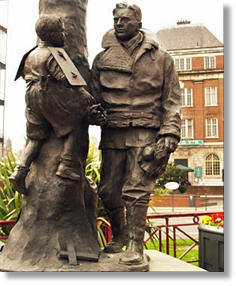
The mission was aborted, and Arthur was removed from his seat for treatment to his injuries whilst the Bomb Aimer took over flying the stricken aircraft. The immediate worry was whether the aircraft would be able to get over the Alps, then where would they go as they would be unable to reach the UK.
My late father was known to the crew as Pop, since he was that much older (30 years of age). He was the radio operator who broke radio silence to find some response to his Mayday calls. One such response was from a friendly airfield in Bone, Algeria. As the aircraft approached the airfield, Arthur insisted in returning to his seat, thus he made a somewhat safe wheels up, bomb-doors-open landing. Arthur died 9 hours after arrival, and is buried in the Bone Military Cemetery.
One everlasting personal memory is that of a 11-12 years old attending an Investiture Ceremony with my mother at Buckingham Palace when my father received his DFM, of which I am still the proud possessor.
John Guy
My late father was known to the crew as Pop, since he was that much older (30 years of age). He was the radio operator who broke radio silence to find some response to his Mayday calls. One such response was from a friendly airfield in Bone, Algeria. As the aircraft approached the airfield, Arthur insisted in returning to his seat, thus he made a somewhat safe wheels up, bomb-doors-open landing. Arthur died 9 hours after arrival, and is buried in the Bone Military Cemetery.
One everlasting personal memory is that of a 11-12 years old attending an Investiture Ceremony with my mother at Buckingham Palace when my father received his DFM, of which I am still the proud possessor.
John Guy
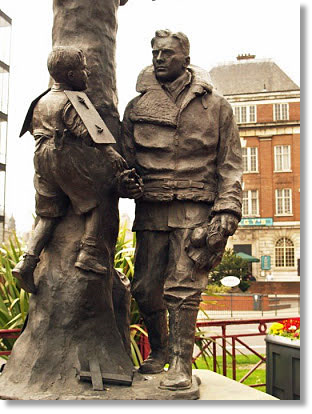
From: George Readman, Yate, South Gloucester
Subject: Blackburn Beverley Photo
Dear Tony,
I must be getting sentimental in my old age. I have a sudden urge to hang a picture of a Blackburn Beverley on my wall or rather I would if I had one.
Would you be kind enough to ask if any member is in possession of such a picture that I might be able to use.
Many thanks and Best wishes
Geordie Readman
Subject: Blackburn Beverley Photo
Dear Tony,
I must be getting sentimental in my old age. I have a sudden urge to hang a picture of a Blackburn Beverley on my wall or rather I would if I had one.
Would you be kind enough to ask if any member is in possession of such a picture that I might be able to use.
Many thanks and Best wishes
Geordie Readman
From: John Holloway, Shrewsbury
Subject: Remembering Them
Hi Tony,
We had a dreadful loss at Mauripur in 1956. Dick Smith was in my billet along with seven others, so we were all pretty close comrades. Photography was one of the main interests and we all had cameras and we had our own darkroom.
July and August was the monsoon season and Dick was doing some work in the darkroom. Because of the heavy rains everything was soaking wet and Dick moved a portable fan on the table and in doing so he unintentionally earthed it, was electrocuted and died as a result.
Subject: Remembering Them
Hi Tony,
We had a dreadful loss at Mauripur in 1956. Dick Smith was in my billet along with seven others, so we were all pretty close comrades. Photography was one of the main interests and we all had cameras and we had our own darkroom.
July and August was the monsoon season and Dick was doing some work in the darkroom. Because of the heavy rains everything was soaking wet and Dick moved a portable fan on the table and in doing so he unintentionally earthed it, was electrocuted and died as a result.
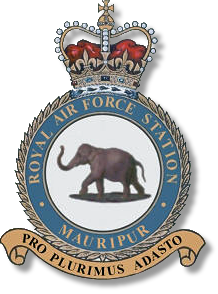
This last weekend was the 21st reunion of the RAF Mauripur Association at Stratford on Avon. The attendances have got smaller as each year goes by; on Friday evening at our dinner just seven members and twenty guests sat down to what was to be the last one as was decided on Saturday morning at our AGM. The association was to be dissolved.
The monies left in the kitty will be divided between the RAF Association and the RAF Benevolent Fund. Our archives, which are quite large, have been accepted by the RAF Museum at Hendon.
So, we've had twenty one years of reunions when we have met old comrades but now it's sadly ended.
RIP Mauripur
John
The monies left in the kitty will be divided between the RAF Association and the RAF Benevolent Fund. Our archives, which are quite large, have been accepted by the RAF Museum at Hendon.
So, we've had twenty one years of reunions when we have met old comrades but now it's sadly ended.
RIP Mauripur
John
From: David King, Bury St Edmunds, Suffolk
Subject: Akrotiri Memories
One Saturday afternoon during my 82-85 tour, the WO from ATC, the FS from the Movements terminal, the FS from visiting aircraft flight and a WO chef were at my AMQ having a nice BBQ and drinks, when a British Airways VC-10 flew low over the airfield, which was closed at the time.
The WO ATC dashed to the phone to be told by the tower that Larnaca airport was closed due to a runway incident and all aircraft were being diverted to Beirut. The BA captain refused to fly to Beirut and insisted the RAF at Akrotiri would open their airfield for him!
Within less than three-quarters of an hour, the airfield was opened, the aircraft landed and pax began to disembark for sandwiches and coffee prepared by inflight catering. If any extra equipment was required I was the WO i/c Domestic Supply Flight!
A perfect example of a Unit working together in an emergency!
David King
ex-Supply Warrant Officer
Subject: Akrotiri Memories
One Saturday afternoon during my 82-85 tour, the WO from ATC, the FS from the Movements terminal, the FS from visiting aircraft flight and a WO chef were at my AMQ having a nice BBQ and drinks, when a British Airways VC-10 flew low over the airfield, which was closed at the time.
The WO ATC dashed to the phone to be told by the tower that Larnaca airport was closed due to a runway incident and all aircraft were being diverted to Beirut. The BA captain refused to fly to Beirut and insisted the RAF at Akrotiri would open their airfield for him!
Within less than three-quarters of an hour, the airfield was opened, the aircraft landed and pax began to disembark for sandwiches and coffee prepared by inflight catering. If any extra equipment was required I was the WO i/c Domestic Supply Flight!
A perfect example of a Unit working together in an emergency!
David King
ex-Supply Warrant Officer
From: Len Bowen, Chisholm, ACT
Subject: Remembering Them
G'day Tony,
Subject: Remembering Them
G'day Tony,
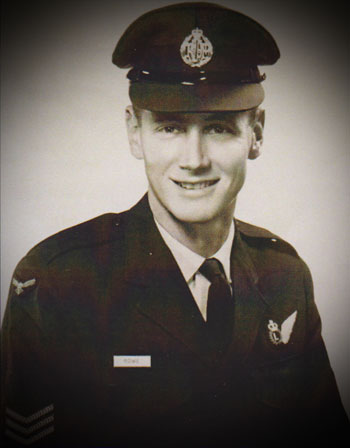
John Rowe, one of the stalwart members of the Movements Mafia in the 1980s and 1990s, was initially in the supply mustering and later became a Loadmaster with 36 Squadron Hercs. Following his time as a Loadie, John returned to supply but mostly worked in the movements world. He was much loved and respected by all who worked for and with him, and he was my strong right arm as my Flight Warrant Officer first at Air Movements Richmond and again later at No 2 Stores Depot Regents Park Warehousing Flight, and it was with great sadness that I attended his funeral at Toowoomba in Queensland late last month.
Back when John Rowe and I first worked together in 1982 and '83, AMS RIC was handling 65,000 passengers a year, as well as almost 900,000 lb of freight a month (true figures; I checked them against the BSRIC Unit History Sheets held by the RAAF Air Historical Branch a couple of years ago) so life in the Section was pretty hectic for all of us, but I never saw John ruffled or stressd. Not much time for a rest cure in the ‘Bionic Barn’ (Warehouse 40) either for John and I in 1984 and '85, as 2SD was the primary Depot for the introduction into service of the then-new F/A 18 Hornets, receiving, handling, storing and re-issuing on a priority basis many thousands of line items of Hornet spares and equipment each month.
In all the time that John worked for - or rather with - me, I only ever saw him disconcerted once. By 1985 we were still receiving our fortnightly pay in ‘Pay Parade’ style, but no longer as cash counted out into our hands, rather in individual sealed envelopes. There was still the inevitable collection line-up immediately after the Paying Officer’s desk, however; Coffee Club, Pay-Day raffle(s), Footy Tipping Club, RAAF Womens’ Assn charities and, on this occasion being late November, the Section Xmas ‘Do’ deposits.
Back when John Rowe and I first worked together in 1982 and '83, AMS RIC was handling 65,000 passengers a year, as well as almost 900,000 lb of freight a month (true figures; I checked them against the BSRIC Unit History Sheets held by the RAAF Air Historical Branch a couple of years ago) so life in the Section was pretty hectic for all of us, but I never saw John ruffled or stressd. Not much time for a rest cure in the ‘Bionic Barn’ (Warehouse 40) either for John and I in 1984 and '85, as 2SD was the primary Depot for the introduction into service of the then-new F/A 18 Hornets, receiving, handling, storing and re-issuing on a priority basis many thousands of line items of Hornet spares and equipment each month.
In all the time that John worked for - or rather with - me, I only ever saw him disconcerted once. By 1985 we were still receiving our fortnightly pay in ‘Pay Parade’ style, but no longer as cash counted out into our hands, rather in individual sealed envelopes. There was still the inevitable collection line-up immediately after the Paying Officer’s desk, however; Coffee Club, Pay-Day raffle(s), Footy Tipping Club, RAAF Womens’ Assn charities and, on this occasion being late November, the Section Xmas ‘Do’ deposits.
I’m not sure what came over me, but as soon as I collected my envelope, I tossed it to John. “Look, Mr. Rowe, I’m really busy upstairs (our offices were on the first floor of the Bionic Barn). Would you please pay off my dues along the line and then drop the envelope back on my desk when you come back up”. Now I knew that there was three-fifths of bugger all in that envelope. There had been a screw-up with my pay and leave bonus a couple of weeks previously, and I’d agreed with the FINACCTO for a full recovery to get the matter sorted out before we really got into the Christmas $$$$$ ‘silly season’. Accordingly I went upstairs to my desk and waited.
About 15 minutes later John came into my office and, most unusually, closed the door behind him. Looking very long-faced he slowly sat down. “Look, Sir, we may have a bit of a problem. I’ve paid off all the vultures as far as I could, but there’s nothing left in your envelope. Nothing at all, and I had to put in the $10 for the Flight Christmas Party for you from my own pay. Is there anything I can do to help you? Have you and Penny got a problem” (John and his lovely wife Julie were also friend of my wife Penny and I outside work hours). I held my hang-dog poker face for about 30 seconds, then seeing how upset and worried John really was, I couldn’t do it to him any longer, and bursting out laughing, explained the situation to him - and also gave him $10 out of my wallet from Penny’s APS pay she’d given me the night before.
John’s face was a mixture of relief and also just a bit of grumpy because I’d dropped him in it. He took a long breath “Sir… you… you... Scots bastard, you!” - then he burst out laughing. “That, Sir, is going to cost you a lot of beers. A LOT of beers!” and he left my office shaking his head.
Farewell John old colleague and old friend. Over my fifty years in Air Force uniform I have had the privilege and pleasure of serving with many, many fine men and women, but none to match Warrant Officer John Rowe.
Kind regards,
Len Bowen
About 15 minutes later John came into my office and, most unusually, closed the door behind him. Looking very long-faced he slowly sat down. “Look, Sir, we may have a bit of a problem. I’ve paid off all the vultures as far as I could, but there’s nothing left in your envelope. Nothing at all, and I had to put in the $10 for the Flight Christmas Party for you from my own pay. Is there anything I can do to help you? Have you and Penny got a problem” (John and his lovely wife Julie were also friend of my wife Penny and I outside work hours). I held my hang-dog poker face for about 30 seconds, then seeing how upset and worried John really was, I couldn’t do it to him any longer, and bursting out laughing, explained the situation to him - and also gave him $10 out of my wallet from Penny’s APS pay she’d given me the night before.
John’s face was a mixture of relief and also just a bit of grumpy because I’d dropped him in it. He took a long breath “Sir… you… you... Scots bastard, you!” - then he burst out laughing. “That, Sir, is going to cost you a lot of beers. A LOT of beers!” and he left my office shaking his head.
Farewell John old colleague and old friend. Over my fifty years in Air Force uniform I have had the privilege and pleasure of serving with many, many fine men and women, but none to match Warrant Officer John Rowe.
Kind regards,
Len Bowen
From: Bruce Oram, San Fulgencio, Alicante
Subject: Remembering Them - Times Have Changed in a Big Way
Hi Tony,
The following list, which deserves a place in this month’s newsletter, originated from Mike Gerigk of Port Alberni, BC, ex CAF Loadmaster and MAMS and who is also a member of the OBA:
Times Have Changed in a Big Way.
*******
1945 - NCO's had a typewriter on their desks for doing daily reports.
2016 - Everyone has an internet access computer, and they wonder why no work is getting done.
*******
1945 - we painted pictures of girls on airplanes to remind us of home.
2016 - they put the real thing in the cockpit.
*******
1945 - if you got drunk off duty your buddies would take you back to the barracks to sleep it off.
2016 - if you get drunk they slap you in rehab and ruin your career.
*******
1945 - you were taught to aim at your enemy and shoot him.
2016 - you spray 500 bullets into the brush, don't hit anything, and retreat because you're out of ammo.
*******
1945 - canteens (and steel pots) were made of steel, and you could heat coffee or hot chocolate in them.
2016 - canteens are made of plastic, you can't heat anything in them, and they always taste like plastic.
*******
1945 - officers were professional soldiers first and they commanded respect.
2016 - officers are politicians first and beg not to be given a wedgie.
*******
1945 - they collected enemy intelligence and analyzed it.
2016 - they collect your pee and analyze it.
*******
1945 - if you didn't act right, the Sergeant Major put you in the brig until you straightened up.
2016 - if you don't act right, they start a paper trail that follows you forever.
*******
1945 - medals were awarded to heroes who saved lives at the risk of their own.
2016 - medals are awarded to people who work at headquarters.
*******
1945 - you slept in barracks like a soldier.
2016 - you sleep in a dormitory like a college kid.
*******
1945 - you ate in a mess hall, which was free, and you could have all the food you wanted.
2016 - you eat in a dining facility, every slice of bread or pad of butter costs, and you better not take too much.
*******
1945 - we defeated powerful countries like Germany and Japan.
2016 - we come up short against Iraq and Afghanistan.
*******
1945 - if you wanted to relax, you went to the rec center, played pool, smoked and drank beer.
2016 - you go to the community center, and you can play pool.
*******
1945 - if you wanted beer and conversation you went to the NCO or Officers' Club.
2016 - the beer will cost you $2.75, membership is forced, and someone is watching how much you drink.
*******
1945 - the Exchange had bargains for soldiers who didn't make much money.
2016 - you can get better and cheaper merchandise at Walmart.
*******
1945 - we could recognize the enemy by their Nazi helmets.
2016 - we are wearing the Nazi helmets.
*******
1945 - we called the enemy names like "Krauts" and "Japs" because we didn't like them.
2016 - we call the enemy the "opposing force" or "aggressor" because we don't want to offend them.
*******
1945 - victory was declared when the enemy was defeated and all his things were broken.
2016 - we haven’t a clue as to what victory is or what it takes to achieve it.
*******
1945 - a commander would put his butt on the line to protect his people.
2016 - a commander will put his people on the line to protect his butt.
*******
1945 - wars were planned and run by generals and Admirals who knew how to fight and win.
2016 - wars are planned by politicians who haven’t a clue about fighting or winning.
*******
1945 - we were fighting for freedom, and the country was committed to winning.
2016 - we don't know what we're fighting for, and the government is committed to social programs and political correctness.
Cheers the Noo!
Bruce
Subject: Remembering Them - Times Have Changed in a Big Way
Hi Tony,
The following list, which deserves a place in this month’s newsletter, originated from Mike Gerigk of Port Alberni, BC, ex CAF Loadmaster and MAMS and who is also a member of the OBA:
Times Have Changed in a Big Way.
*******
1945 - NCO's had a typewriter on their desks for doing daily reports.
2016 - Everyone has an internet access computer, and they wonder why no work is getting done.
*******
1945 - we painted pictures of girls on airplanes to remind us of home.
2016 - they put the real thing in the cockpit.
*******
1945 - if you got drunk off duty your buddies would take you back to the barracks to sleep it off.
2016 - if you get drunk they slap you in rehab and ruin your career.
*******
1945 - you were taught to aim at your enemy and shoot him.
2016 - you spray 500 bullets into the brush, don't hit anything, and retreat because you're out of ammo.
*******
1945 - canteens (and steel pots) were made of steel, and you could heat coffee or hot chocolate in them.
2016 - canteens are made of plastic, you can't heat anything in them, and they always taste like plastic.
*******
1945 - officers were professional soldiers first and they commanded respect.
2016 - officers are politicians first and beg not to be given a wedgie.
*******
1945 - they collected enemy intelligence and analyzed it.
2016 - they collect your pee and analyze it.
*******
1945 - if you didn't act right, the Sergeant Major put you in the brig until you straightened up.
2016 - if you don't act right, they start a paper trail that follows you forever.
*******
1945 - medals were awarded to heroes who saved lives at the risk of their own.
2016 - medals are awarded to people who work at headquarters.
*******
1945 - you slept in barracks like a soldier.
2016 - you sleep in a dormitory like a college kid.
*******
1945 - you ate in a mess hall, which was free, and you could have all the food you wanted.
2016 - you eat in a dining facility, every slice of bread or pad of butter costs, and you better not take too much.
*******
1945 - we defeated powerful countries like Germany and Japan.
2016 - we come up short against Iraq and Afghanistan.
*******
1945 - if you wanted to relax, you went to the rec center, played pool, smoked and drank beer.
2016 - you go to the community center, and you can play pool.
*******
1945 - if you wanted beer and conversation you went to the NCO or Officers' Club.
2016 - the beer will cost you $2.75, membership is forced, and someone is watching how much you drink.
*******
1945 - the Exchange had bargains for soldiers who didn't make much money.
2016 - you can get better and cheaper merchandise at Walmart.
*******
1945 - we could recognize the enemy by their Nazi helmets.
2016 - we are wearing the Nazi helmets.
*******
1945 - we called the enemy names like "Krauts" and "Japs" because we didn't like them.
2016 - we call the enemy the "opposing force" or "aggressor" because we don't want to offend them.
*******
1945 - victory was declared when the enemy was defeated and all his things were broken.
2016 - we haven’t a clue as to what victory is or what it takes to achieve it.
*******
1945 - a commander would put his butt on the line to protect his people.
2016 - a commander will put his people on the line to protect his butt.
*******
1945 - wars were planned and run by generals and Admirals who knew how to fight and win.
2016 - wars are planned by politicians who haven’t a clue about fighting or winning.
*******
1945 - we were fighting for freedom, and the country was committed to winning.
2016 - we don't know what we're fighting for, and the government is committed to social programs and political correctness.
Cheers the Noo!
Bruce
That's it for this edition
Have a great weekend!
Have a great weekend!
Tony Gale
ukmamsoba@gmail.com
ukmamsoba@gmail.com







